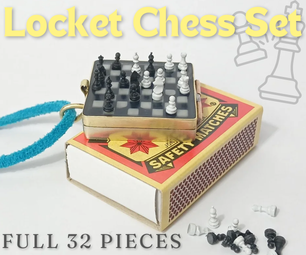Introduction: Photograph to Stencil
Instructions on using photoshop to convert a digital photo/image to a multiple layered stencil.
Step 1: Open Your Image in Photoshop
Open up your image in photoshop.
Now is a good time to crop out the subject and adjust the 'levels' (Image>Adjustments>Levels) as well as the contrast. Get the subject's colors different from the background.
In this image I just have the original photograph before I cropped and adjusted the colors.
Now is a good time to crop out the subject and adjust the 'levels' (Image>Adjustments>Levels) as well as the contrast. Get the subject's colors different from the background.
In this image I just have the original photograph before I cropped and adjusted the colors.
Step 2: Apply the Cutout Filter
Filter>Artistic>Cutout
This will bring up a preview window and some extra controls (image attached)
Your options will be:
Number of Levels - The number of colors that will be used to make up the image. The stencil was a 3 layer stencil, but if I set the levels to 3 it just became too difficult to make out.
Edge Simplicity - Higher the number the straighter the edges become but you lose detail.
Edge Fidelity - experiment with this one, I dont think it makes enough difference when you have the x-acto in your hand though
This will bring up a preview window and some extra controls (image attached)
Your options will be:
Number of Levels - The number of colors that will be used to make up the image. The stencil was a 3 layer stencil, but if I set the levels to 3 it just became too difficult to make out.
Edge Simplicity - Higher the number the straighter the edges become but you lose detail.
Edge Fidelity - experiment with this one, I dont think it makes enough difference when you have the x-acto in your hand though
Step 3: Final Changes
This is what I finally came up with.
Using the 'magic wand' tool and lasso tool I got rid of the background.
Using the 'magic wand' tool and lasso tool I got rid of the background.
Step 4: Print and Cut
For every color you plan on having in your stencil, print out a copy of your image. I have 3 colors, 3 prints.
After you are done printing grab an x-acto knife, box cutter, scissors or whatever else you want to use to cut out the stencil.
When planning a cut think in layers. For example I have a base layer, so I cut the entire outline of the pillbug out (bottom image) then the midrange color which covers alot of the base color, then the highlights on top, all sprayed in order of course.
After you are done printing grab an x-acto knife, box cutter, scissors or whatever else you want to use to cut out the stencil.
When planning a cut think in layers. For example I have a base layer, so I cut the entire outline of the pillbug out (bottom image) then the midrange color which covers alot of the base color, then the highlights on top, all sprayed in order of course.
Step 5: Spray!
You can use spray adhesive to prevent underspray (spray that gets under the details of the stencil) and cover around the stencil with other paper to prevent overspray (spray that goes over the edge of the stencil)
Be sure to wait and let the paint dry between layers.
Be sure to wait and let the paint dry between layers.
Participated in the
The Instructables Book Contest











